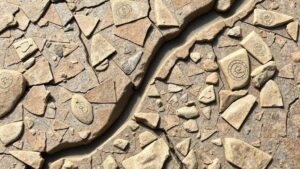Detecting for Hidden Money Near Historic Courthouses and Jails
Detecting for Hidden Money Near Historic Courthouses and Jails
The quest for hidden treasures is a pursuit that has fascinated individuals for centuries. Among the key locations for such adventures are historic courthouses and jails, significant landmarks that often hold secrets of a bygone era. This article delves into the methods and considerations involved in detecting for hidden money near these historic sites, providing a comprehensive overview of the topic.
The Historical Context
Historically, courthouses and jails have been central to community governance and justice. Courthouses, often grand structures, were not only places of legal proceedings but also sites of financial transactions related to land, taxes, and fines. Jails, on the other hand, can be associated with debts and the financial burdens that led individuals to incarceration. With this historical backdrop, it is crucial to understand the potential for discovering hidden money or valuables.
Identifying Potential Locations
When considering where to search for hidden money, certain locations hold greater promise due to their historical significance and previous economic activities. Key areas to focus on include:
- Basements and Storage Areas: Many historic courthouses and jails feature basements that could have been used for storing financial records or valuables.
- Grounds and Gardens: Historical records often indicate areas around buildings that had functions such as punishment or reward, where individuals may have buried valuables.
- Nearby Old Wells or Pits: According to anecdotal evidence, many individuals have hidden money in wells or pits during times of economic uncertainty.
Tools and Techniques for Detecting
The tools and techniques employed in detecting for hidden money are rooted in both traditional methods and advanced technology. Successful treasure hunters often utilize a combination of the following:
- Metal Detectors: These devices can detect metal objects buried underground, making them invaluable in searches for coins, jewelry, or other metallic items.
- Ground Penetrating Radar (GPR): GPR technology allows investigators to visualize subsurface structures, potentially indicating buried items.
- Scanning Electron Microscopes (SEM): While mostly used in academia, SEM can analyze the composition of found items, revealing their potential value.
Legal Considerations
Before embarking on a treasure-hunting expedition, it is essential to consider the legal implications. The laws governing artifact recovery vary greatly by jurisdiction. Some key points include:
- Permission: Always seek permission from relevant authorities or property owners before conducting any searching or digging.
- Local Laws: Familiarize yourself with local and state laws regarding treasure hunting; some locations may have stringent regulations.
- Reporting Finds: Be aware that certain finds, particularly those of historical significance, may need to be reported to local historical societies or authorities.
Successful Case Studies
Numerous treasure hunters have successfully located hidden money and valuables near historic courthouses and jails. For example, a metal detector enthusiast uncovered a cache of silver coins dating back to the 1800s beneath the steps of a historic courthouse in Virginia, believed to have been hidden during the Civil War. Similarly, a group of amateur historians discovered old banknotes while excavating the grounds of an abandoned jail, originating from a notorious bank heist in the 1920s.
Real-World Applications and Takeaways
The excitement of uncovering hidden money or artifacts extends beyond just the thrill of discovery; these finds contribute to historical understanding and preservation. Engaging in this type of treasure hunting fosters interest in local history and encourages community preservation efforts.
For individuals interested in embarking on their adventure, the following actionable takeaways may prove beneficial:
- Research: Before beginning, conduct thorough historical research to identify promising locations and understand the past economic activities in the area.
- Network: Engage with local historical societies or clubs; they can provide invaluable insights and resources.
- Practice Ethical Hunting: Always follow ethical guidelines and respect the integrity of the sites you explore.
Conclusion
Detecting for hidden money near historic courthouses and jails is not only a thrilling pursuit but also a process steeped in historical significance. By understanding the context, utilizing appropriate tools, and adhering to legal guidelines, individuals can embark on a rewarding journey that not only may yield treasures but also helps illuminate and preserve history for future generations.

